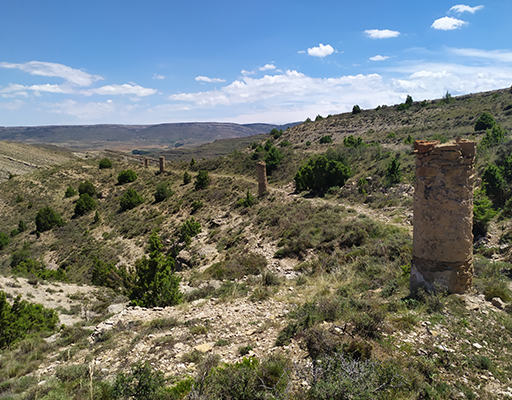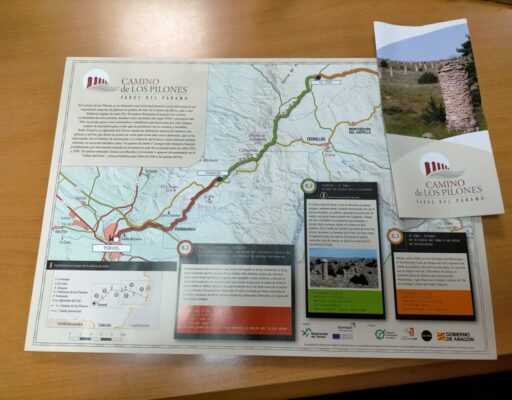El camino de los pilones: restoring cultural heritage to revitalise mountain areas
Mountain areas are rich in cultural heritage, but sometimes it is not protected or used in a sustainable way. As part of the RAMSAT project, the province of Teruel (Spain) has carried out actions to preserve an ancient cultural route and improve coordination between administrative bodies, with the aim of promoting this route as part of a single tourist offer.
The ancient cultural heritage of the Teruel mountains
The mountains have a rich cultural heritage that attracts many visitors. However, this heritage is not always promoted or protected. This was the case of the Pylons Route in the province of Teruel, Spain.
“El camino de los pilones” or the “Pylons route” is an ancient path that has been used in the province of Teruel since the 12th or 13th century. The road is lined with stone and mortar pylons, some up to 2.5 metres high. In the past, this road was used by wool merchants and shepherds with their livestock, and the pylons helped travellers and merchants find their way through the snow and blizzards that often fell in this area, as the road passes through villages at an altitude of 1,500 metres.
The route of the pylons is therefore an integral part of the history and cultural heritage of the province of Teruel. However, both the road and the pylons have not been very well protected in the past and are not particularly promoted. Only a 6-kilometre stretch has been recognised for its cultural interest.
Preserving and coordinating the promotion of cultural heritage
The objective of the action initiated by the province of Teruel was to promote the cultural heritage of the Pylons route by preserving the pylons and creating a common tourist offer in the different counties of the province.
To this end, the province of Teruel set up a working group in 2022 to bring together all the stakeholders involved in promoting the route of the pylons and to jointly define the actions to be carried out. The working group includes the Provincial Government of Teruel, the County of Maestrazgo, the County of Comunidad de Teruel, the Regional Government of Aragon’s Department of Heritage and the School of Conservation and Restoration of Cultural Heritage of Aragon (ESCYRA).
A public call for tenders was launched in order to trace the entire route, as well as to develop common branding, including a logo, slogan, maps and materials such as promotional brochures. In addition, the School of Conservation and Restoration of Cultural Heritage of Aragon is testing materials and techniques to preserve the pylons damaged by time, erosion and wind.


A new tourist offer beyond administrative borders
As the route crosses the counties of Maestrazgo and Comunidad de Teruel, the project has helped to bring together all the public bodies to create a single tourist offer that overcomes administrative boundaries. As a result, 7 technicians from the 4 different public bodies have worked together in the working group to map and brand the route and will jointly promote the Pylons route in the future. Cooperation is therefore a key achievement of this initiative, together with the preservation and promotion of the heritage.
Since 2023, the Pylons route is promoted as a tourist offer and maps and signals are installed along the route to guide tourists. The promotion of the route of the pylons is important in the context of the province of Teruel, a sparsely populated mountainous area that is building on sustainable rural tourism. In the county of Maestrazgo, and even more so in the county of Comunidad de Teruel, the service sector is a major contributor to local gross value added.